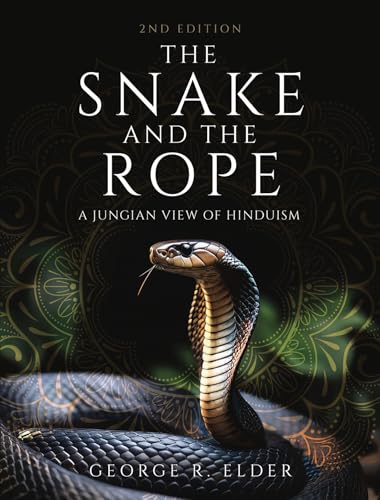
The Snake and the Rope: A Jungian View of Hinduism

Let us consider some terms. “Civilization” is a difficult word to define although the presence of cities seems etymologically necessary (consider Latin, civitas, “citizen; citizens united; a city”). J. M. Roberts writes: “Some have said that a civilized society is different from an uncivilized society because it has a certain attribute—writing,
... See moreGeorge R. Elder • The Snake and the Rope: A Jungian View of Hinduism
Even a superficial acquaintance with Eastern thought is sufficient to show that a fundamental difference divides East and West. The East bases itself upon psychic reality, that is, upon the psyche as the main and unique condition of existence. It seems as if this Eastern recognition were a psychological or temperamental fact rather than a result of
... See moreGeorge R. Elder • The Snake and the Rope: A Jungian View of Hinduism
It is clear now that the issue is epistemology—what one can and cannot know. And Jung is saying he himself is following the eighteenth-century philosopher Immanuel Kant who perceived that everything we know is limited by mental categories, that we are always caught inside our subjectivity. This means that we can never know something “as it is”
... See moreGeorge R. Elder • The Snake and the Rope: A Jungian View of Hinduism
Jung says the same thing elsewhere in a different tone, acknowledging that Indian religion uses Sanskrit words that can be correctly translated as “ego” and “Self” (respectively, ahaṃkāra—pronounced uh-hum-KAR-uh—and ātman): We might therefore be inclined to assume that in India the metaphysical problem “man and God” has been shifted on to the
... See moreGeorge R. Elder • The Snake and the Rope: A Jungian View of Hinduism
Part of the difficulty of accepting Jung’s rank is that both Siddhārtha and Jesus still have projected onto them the central orienting archetype of the Self—which for Indians of the fifth century BCE was called “Buddha” and for the Jews of the first century CE was called “Christ.” C. G. Jung of the twentieth century, on the other hand, is just
... See moreGeorge R. Elder • The Snake and the Rope: A Jungian View of Hinduism
This means that Nietzsche was wrong: “God” is not actually dead but changing the way that “He” wishes to be perceived. Nor is it true that “Pan is dead.” Instead, Pan lives within the depths of the psyche as the archetypal “goat god” behind our passion for nature, for play, for joy in sex. “Aphrodite” lives as the force that patterns the way we
... See moreGeorge R. Elder • The Snake and the Rope: A Jungian View of Hinduism
Indeed, the lack of a “vital link” to our psychological depths is what leads to individual suicide since biologically the idea of self-destruction would not occur to us. Even cultures can commit suicide, as elected leaders make self-destructive decisions with which everybody just goes along. But that only happens if the culture’s religion is sick.
... See moreGeorge R. Elder • The Snake and the Rope: A Jungian View of Hinduism
The individual who is obliged to “realize the shadow”—to discover it consciously—gains, however, not only the personal satisfaction of becoming more honest but also becomes less touchy, not so defensive or inclined to know for certain what is right and wrong. A person who can acknowledge to some degree his or her shadow becomes more compassionate
... See moreGeorge R. Elder • The Snake and the Rope: A Jungian View of Hinduism
Buddhism, which originated in India, invites us to board either of its two main forms. They are called the Hīnayāna (“Little Vehicle”) or Mahāyāna (“Great Vehicle”) and are likened to rafts capable of “crossing the water” of worldly saṃsāra to reach the “far shore” of nirvāṇa.